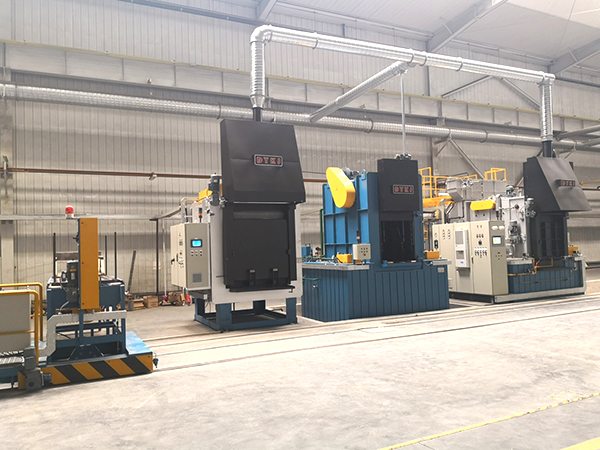400-000-0000

Multi-purpose furnace heat treatment furnace has the following characteristics:
(1) The temperature range of the heat treatment furnace is wide. The main purpose is to obtain austenitic steel with good plasticity, and its temperature range is from 900 to 1200 ° C. Due to different process requirements for heat treatment, the temperature can be as high as 1300 ° C and the lowest as about 100 ° C. The temperature difference is so great that the furnace structure is also very different. A furnace temperature higher than 650 ° C is called a high-temperature heat treatment furnace, and the heat transfer is mainly based on radiation, with convection as the supplement. A furnace temperature below 650 ° C is called a low-temperature heat treatment furnace, and the heat transfer mainly depends on convection. The heat treatment requires the furnace temperature to be uniform and avoid excessive local temperature, so the furnace and the combustion chamber of the heat treatment furnace are sometimes separated.
(2) The temperature control of the heat treatment furnace is relatively strict. Heating before pressure processing, the temperature of the metal fluctuates by ten to twenty degrees, which generally has little effect on the quality. However, whether the heat treatment furnace can guarantee the temperature required by the heat treatment process has a great impact on the product quality, and generally does not exceed 3 ~ 10 ° C. The temperature distribution on the section of the object to be heated should be as uniform as possible, and the temperature difference should not exceed 5 ~ 15 ℃. In terms of controlling furnace temperature, electric furnace is superior. In order to achieve the purpose of accurate temperature control, it is better to uniformly arrange the flameless burners and flat flame burners with low power, which is convenient for segmented control, too few burners, too concentrated, and easy to overheat. At the same time, the arrangement of the burner or the electric heating body and the furnace structure should be conducive to the circulation of the furnace gas, so that the temperature in the furnace tends to be uniform. For this purpose, a fan can be used in the furnace.
(3) The heat treatment furnace should minimize the oxidation and decarburization of the metal. For the heat treatment of steel, surface oxidation and decarburization are not allowed, and the surface should be smooth and clean. Heat treatment furnaces often need to be sealed in order to control the composition of the furnace gas, and sometimes to maintain a specific atmosphere in the furnace. For example, the bright annealing of cold-worked steel is mostly performed in a protective gas medium or in a vacuum, so muffle covers and radiant tubes are widely used in heat treatment furnaces. When the workpiece or steel is subjected to chemical heat treatment, such as carburizing, nitriding, cyanidation, etc., it must be heated in an active medium with a certain composition. A muffle furnace or bath furnace must be used.
(4) The productivity and thermal efficiency of the heat treatment furnace are low. During the heat treatment, in order to make the temperature of the metal section uniform and the crystalline structure complete, the metal needs to stay in the furnace for a long time. Regardless of the type of heat treatment, the material has one or several soaking or During the heat preservation phase, the cooling process is often performed in the furnace. Some varieties of heat treatment even require multiple heating, holding and cooling. Many heat treatment furnaces operate periodically. For these reasons, the productivity and thermal efficiency of the heat treatment furnace are much lower than those of the forging and heating furnace.
